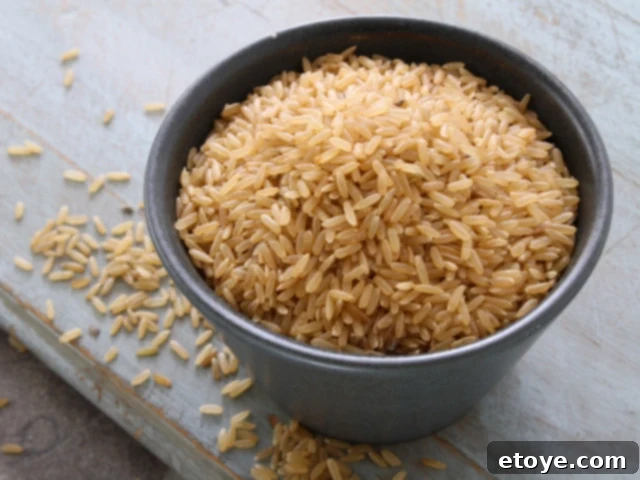Ultimate Winter Pantry Essentials: Your Guide to Cozy, Flavorful Meals
As the crisp embrace of winter settles in, there’s a unique joy in retreating indoors, bundling up, and savoring comforting meals that warm you from the inside out. But what truly transforms those chilly evenings into culinary adventures isn’t just a collection of recipes; it’s a strategically stocked winter pantry. Imagine whipping up a hearty stew, a creamy curry, or a satisfying pasta dish at a moment’s notice, without braving the cold for a grocery run. A well-prepared pantry isn’t just about convenience; it’s about culinary empowerment, ensuring you have the building blocks for delicious, nutritious, and comforting food, even when blizzards hit or your energy levels dip. In this comprehensive guide, we’ll dive into the essential items that will keep your kitchen humming all season long, along with smart strategies to make the most of every ingredient.

Embrace Mindful Cooking: Master Your Existing Pantry First
Before you embark on a grand shopping spree, take a moment to rediscover the treasures already residing in your pantry. Winter cooking is an excellent opportunity to reduce food waste and unleash your inner culinary innovator by focusing on what you have. This approach is particularly valuable for those living in regions prone to heavy snowfall or for anyone looking to eat well on a budget.
Consider that lonely can of black beans tucked away in the back. With just a few cups of vegetable or chicken stock, some chopped root vegetables like carrots and potatoes, and a dash of warming curry powder, it can be transformed into a robust, flavorful soup. Or perhaps a can of pumpkin puree, often reserved for seasonal pies, can become a velvety, savory soup when blended with coconut milk, a pinch of cinnamon, and a tablespoon of umami-rich miso paste. These transformations require minimal effort but yield gourmet-tasting results.
This philosophy aligns perfectly with what many call “Reverse Meal Planning.” Instead of meticulously planning meals and then creating a shopping list for specific ingredients, you start by assessing your current inventory. What do you have on hand? How can these items be combined to create satisfying meals? This method not only encourages creativity and reduces grocery costs but also minimizes food waste, making your kitchen more sustainable. It’s a rewarding challenge that turns ordinary ingredients into extraordinary meals.
For example, imagine these pantry discoveries:
- Found in the Pantry: A can of chickpeas, a jar of red curry paste, and a can of coconut milk.
- Reverse Meal Idea: Simmer the chickpeas in a fragrant sauce made from the curry paste and creamy coconut milk. Serve this flavorful, plant-based curry over fluffy rice for a quick and incredibly satisfying dinner.
- Bonus Tip: Elevate this dish by stirring in any leftover fresh produce you have, such as wilting spinach, a handful of frozen peas, or diced bell peppers, to add extra nutrients and bulk.
This resourceful approach to meal preparation is especially beneficial when the weather discourages trips to the store. With a thoughtfully stocked pantry and a willingness to get creative, you’re always prepared, whether for an unexpected winter storm, a sudden craving for comfort food, or simply a desire for a delicious homemade meal. Embrace what you already own, and you’ll find endless possibilities for simple, cozy, and delicious dishes.
Essential Winter Pantry Staples for Cozy Cooking
Now that you’re inspired to cook with what you have, let’s explore the fundamental building blocks for a truly robust winter pantry. These are the versatile ingredients that will form the backbone of countless comforting meals, ensuring you’re always ready to create culinary magic.
1. Versatile Canned Tomatoes (Crushed, Diced, Whole, Paste)

A true champion of the winter pantry, canned tomatoes are an absolute must-have. Their extended shelf life and incredible versatility make them the perfect foundation for an array of comforting dishes when fresh produce is scarce. Whether you opt for crushed, diced, or whole peeled tomatoes, they provide a rich, acidic base that adds depth and brightness to everything from classic marinara sauces and hearty chilis to warming stews and vibrant soups.
Pro Tip: For an incredibly quick and rich tomato sauce, combine canned crushed tomatoes with a dollop of concentrated tomato paste and a splash of balsamic vinegar. Simmer briefly, then toss with your favorite pasta shapes for an effortless, satisfying meal on a blustery day. Don’t forget whole peeled tomatoes are excellent for slow-cooked sauces, breaking down beautifully to create a rustic texture, while diced tomatoes are perfect for chilis and chunky soups.
2. Nutrient-Rich Whole Grains (Brown Rice, Wild Rice, Quinoa, Oats)

Whole grains are powerhouses of nutrition, offering essential fiber, protein, and sustained energy—exactly what you need for hearty winter meals. Brown rice and wild rice are excellent companions for rich vegetable stocks or chicken broths, forming the base of nourishing soups, pilafs, and satisfying grain bowls. Beyond these, consider stocking quinoa, a complete protein that cooks quickly, and wheat berries or farro, which add a delightful chewy texture to salads, stews, and side dishes.
Why Stock Up: Their long shelf life makes them ideal for long-term food storage. They are perfect for those cold days when you crave something both filling and nutritious, providing a warm foundation for almost any leftover fresh ingredients or cooked vegetables you might have. Don’t forget rolled oats, which are not just for breakfast porridge; they can thicken savory dishes or be used in baking.
3. Protein-Packed Nut Butters (Peanut, Almond, Cashew, and More)

Nut butters have evolved far beyond simple sandwich spreads. Rich in healthy fats and protein, they offer a quick energy boost and are incredibly versatile additions to both sweet and savory cooking. Their creamy texture and distinctive flavors can elevate a wide range of dishes, adding richness and depth.
Creative Ideas: Use peanut butter as the backbone for delicious curry-based sauces or a savory satay dip. Almond butter works wonderfully in smoothie bowls, energy bites, or as a nutritious boost in overnight oats. Cashew butter, with its neutral flavor, can serve as a creamy base for homemade salad dressings, vegan cheese sauces, or to thicken soups. These shelf-stable foods are excellent for long-term pantry storage and can be a lifesaver for quick, nutrient-dense meals or snacks.
4. Umami-Rich Miso Paste: Your Secret Weapon

Miso paste is truly a secret weapon in winter cooking, effortlessly adding a profound layer of umami, depth, and complex savory notes to virtually any dish. A little goes an incredibly long way, making it a highly cost-effective ingredient for your pantry. It’s a fermented paste, typically made from soybeans, and comes in various types like white (shiro), yellow (shinshu), and red (aka), each with distinct flavor profiles ranging from mild and sweet to robust and salty.
How to Maximize Its Use: Stir a spoonful of miso paste into hot chicken or vegetable stock for an instant, deeply savory and comforting soup. It’s also fantastic for boosting the flavor of marinades for meats or vegetables, enriching salad dressings, or even adding a surprising complexity to mashed potatoes. On a particularly cold day, simply whisk a teaspoon with hot water and a touch of soy sauce for an incredibly quick and warming broth.
5. Creamy Coconut Milk: The Dairy-Free Dream

Coconut milk is another indispensable cold-weather pantry staple that brings rich, creamy indulgence to your cooking. It has the power to transform simple soups, robust curries, and even baked goods into lusciously comforting treats. Whether you’re craving a warm, aromatic Thai-inspired curry or need a fantastic dairy-free alternative for a creamy texture in recipes, coconut milk is your go-to.
Versatile Applications: Combine coconut milk with chickpeas, canned tomatoes, and a blend of curry powder for an easy way to create a hearty, flavorful, and plant-based stew. It’s also excellent in creamy lentil soups, adding richness to rice puddings, or even as a base for dairy-free hot cocoa. Trust me, you’ll want to add several cans of both full-fat and light coconut milk to your shopping list every winter season!
6. Bonus Essential: Versatile Canned Pumpkin

Often relegated to holiday pies, canned pumpkin is an incredibly versatile pantry staple with a much broader culinary range. It’s packed with vitamin A, fiber, and has an impressively long shelf life, making it a healthy and convenient addition to your winter kitchen.
Beyond Pie: Don’t limit its use to desserts! Stir canned pumpkin into pasta sauces or risottos for a creamy, nutritious boost and a subtle earthy sweetness. For a quick sweet treat, mix it with brown sugar, cinnamon, and nutmeg to create a delightful pumpkin butter perfect for spreading on toast, stirring into oatmeal, or topping yogurt. It’s also excellent for all kinds of baked goods, from muffins to quick breads, and offers a natural richness that fresh pumpkin can’t always provide consistently.
7. Legumes: The Hearty & Economical Protein Source
Both dried and canned legumes are cornerstones of a well-stocked winter pantry. They are economical, highly nutritious, and incredibly versatile. Keep a variety on hand: black beans, chickpeas, kidney beans, and various lentils.
- Canned Legumes: Offer ultimate convenience. Rinse and drain them, and they’re ready to add to chilis, soups, stews, quick salads, or even blend into dips like hummus.
- Dried Legumes: While requiring pre-soaking and longer cooking, they are significantly more cost-effective and allow for greater control over texture. Perfect for large batches of soup, dal, or making your own bean burgers.
Legumes provide an excellent source of plant-based protein and fiber, making them ideal for creating satisfying vegetarian or vegan meals, or for bulking up meat-based dishes.
8. Flavor Foundations: Broths & Stocks
Chicken, vegetable, and beef broths or stocks are non-negotiable for a winter pantry. They are the liquid gold that forms the basis of countless soups, stews, risottos, and are essential for cooking grains like rice and quinoa, infusing them with extra flavor.
- Ready-to-Use Cartons/Cans: Convenient for quick meals.
- Bouillon Cubes/Powders: Excellent space-saving alternatives. Dissolve them in hot water to create instant broth whenever needed.
Having a variety ensures you can adapt to any recipe or dietary preference.
9. The Spice Rack: Your Flavor Orchestra
While not a “staple” in the same way as a can of beans, a well-stocked spice rack is the soul of winter cooking. Warming spices transform simple ingredients into comforting masterpieces. Ensure you have:
- Sweet Spices: Cinnamon, nutmeg, cloves, ginger (ground) – essential for baking, warming drinks, and even savory dishes like Moroccan tagines.
- Savory Spices: Cumin, coriander, chili powder, paprika, turmeric, dried thyme, rosemary, bay leaves, oregano – crucial for chilis, curries, stews, and roasted vegetables.
Freshly ground spices offer the most potent flavor, so consider buying whole spices and grinding them as needed.
Bonus Tips for a Strategically Stocked Winter Pantry
Beyond the core essentials, these additional tips will help you fine-tune your winter pantry for maximum efficiency, deliciousness, and preparedness:
- Shelf-Stable Milk: Keep cartons of shelf-stable UHT milk (dairy or non-dairy like oat or almond milk) or powdered milk on hand. They’re excellent backups for baking, coffee, or creating comforting hot drinks like cocoa or hot lemon tea when fresh milk runs out.
- Vinegars & Oils: Stock essential cooking oils like olive oil and a neutral vegetable oil. Don’t forget vinegars like apple cider vinegar (great for dressings and quick pickles) and balsamic vinegar (adds depth to sauces and glazes). Soy sauce is also crucial for umami and seasoning.
- Dried Fruits, Nuts & Seeds: These are fantastic for snacking, adding to oatmeal, baking, or topping salads and yogurts for extra texture and nutrients.
- Pasta & Grains: Beyond whole grains, have a variety of pasta shapes (spaghetti, penne, macaroni) for quick meals. Couscous or polenta also cook quickly and make excellent side dishes.
- Smart Shopping: Always grab sale items like canned chickpeas, diced tomatoes, or discounted dried lentils during your regular grocery trips. Stocking up when prices are low is a smart way to save money in the long run.

Ready to Stock Up and Savor the Season?
Having a strategically well-stocked winter pantry is one of the best ways to reduce food waste, save money, and ensure you’re always prepared to create comforting, nourishing meals, no matter what the weather outside brings. With these essential pantry staples and a mindset of creative cooking, you’ll be ready to tackle any recipe—or unexpected winter storm—that comes your way. Embrace the simplicity and satisfaction of cooking from your pantry, transforming basic ingredients into heartwarming dishes that make winter truly wonderful.
What are some of your personal favorite foods or pantry staples for this time of year? Do you have a go-to cozy winter-time meal that brings you comfort? Share your wisdom and delicious ideas with us in the comments below! We absolutely love to hear from our readers and discover new culinary inspirations.
